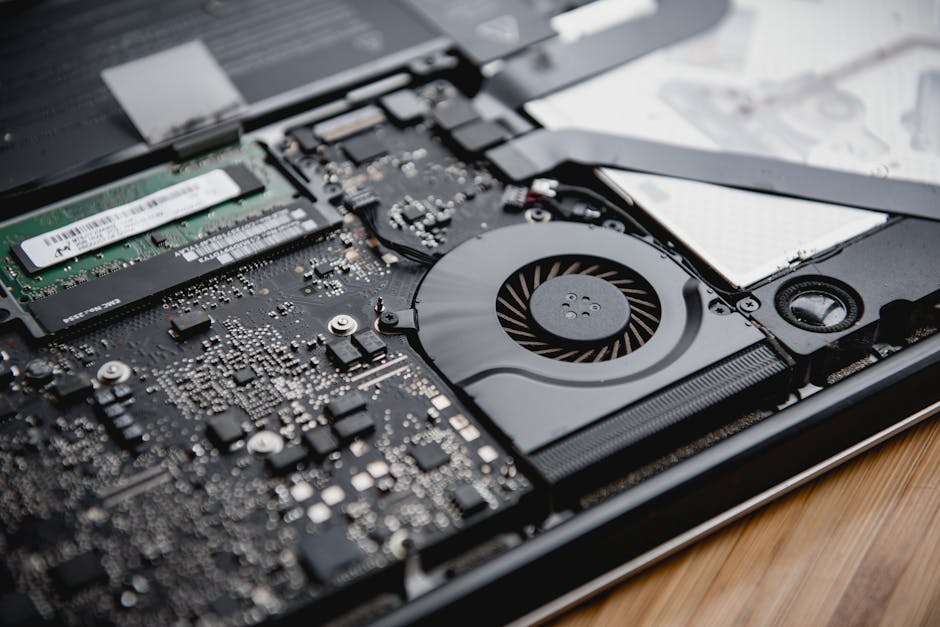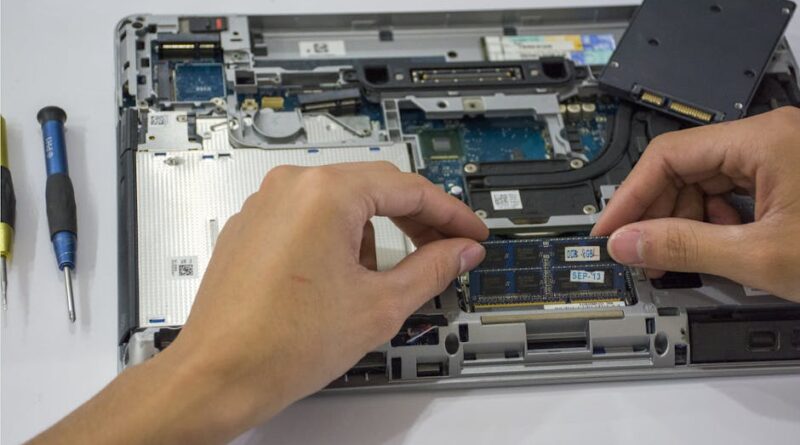Unlocking the Power: How to Upgrade Your Laptops RAM and Storage
Have you ever felt frustrated by the sluggish performance of your laptop? Do you wish you could boost its speed and storage capacity without having to buy a whole new device? If so, you’re in luck! In this comprehensive guide, we will delve into the world of upgrading your laptop’s RAM and storage. From understanding the basics to mastering the process, we’ve got you covered. So, grab your tools and get ready to unlock the full potential of your trusty companion.
The Basics of Laptop Upgrades

Before we dive into the nitty-gritty of upgrading your laptop’s RAM and storage, let’s first understand the basics. RAM, or Random Access Memory, is a crucial component that affects your laptop’s performance. It acts as a temporary storage space for data that your computer needs to access quickly. On the other hand, storage, often referred to as a hard drive or solid-state drive (SSD), is where your files, programs, and operating system are stored long-term.
When you upgrade your laptop’s RAM, you increase the amount of memory available for your computer to use. This can lead to improved multitasking capabilities, faster application loading times, and overall better performance. Upgrading your storage, on the other hand, allows you to store more files, install additional programs, and increase the overall speed of your laptop.
Benefits of Upgrading Your Laptops RAM

Upgrading your laptops RAM can have a significant impact on its overall performance. By increasing the amount of memory available, you can enjoy smoother multitasking, faster data processing, and improved responsiveness. Imagine being able to open multiple tabs in your web browser, run demanding software applications, and edit high-resolution photos without experiencing any lag.
Moreover, upgrading your laptops RAM can extend its lifespan by allowing it to handle the demands of modern software and operating systems. As technology continues to advance, older devices often struggle to keep up with the latest requirements. By upgrading your laptops RAM, you can ensure that it remains relevant and functional for years to come.
Step-by-Step Guide to Upgrading Your Laptops RAM

Now that you understand the benefits of upgrading your laptops RAM, lets walk through the process step by step. Before you begin, make sure to back up your important data and consult your laptops user manual for specific instructions. Heres how you can upgrade your laptops RAM:
1. Determine Compatibility
The first step is to determine the type and amount of RAM your laptop supports. You can usually find this information in your laptops user manual or by visiting the manufacturers website. Make sure to check the maximum capacity of RAM your laptop can accommodate.
2. Purchase the Right RAM
Once you know what type of RAM your laptop supports, its time to purchase the new memory modules. Make sure to buy RAM modules that are compatible with your laptops specifications, including the correct speed and capacity.
3. Prepare Your Workspace
Before you begin the installation process, ensure that you have a clean and well-lit workspace. Gather the necessary tools, such as a screwdriver, and take precautions to prevent static electricity from damaging your laptops components.
4. Open Your Laptop
Turn off your laptop and disconnect all cables and power sources. Carefully remove the screws that secure the back panel of your laptop and gently lift it off to access the internal components. Locate the existing RAM modules and identify the empty slots for additional memory.
5. Install the New RAM
Align the new RAM module with the slot at a 45-degree angle and gently press it down until it clicks into place. Make sure that the notches on the module match the keys in the slot to ensure proper alignment. Repeat this process for any additional RAM modules you are installing.
6. Replace the Cover
Once you have installed the new RAM modules, carefully replace the back panel of your laptop and secure it with the screws. Reconnect the power source and turn on your laptop to check if the new memory is recognized. You can verify this by checking the system properties or using diagnostic tools.
Benefits of Upgrading Your Laptops Storage
Upgrading your laptops storage can also have a significant impact on its performance and functionality. By increasing the amount of storage space available, you can store more files, install additional programs, and enjoy faster data access speeds. Whether youre a student, professional, or casual user, having ample storage is essential for a seamless computing experience.
Moreover, upgrading your laptops storage to a solid-state drive (SSD) can result in even greater improvements. SSDs are known for their faster read and write speeds, which can lead to quicker boot times, shorter application loading times, and overall snappier performance. If youre tired of waiting for your laptop to start up or applications to launch, upgrading to an SSD may be the solution youve been looking for.
Step-by-Step Guide to Upgrading Your Laptops Storage

Ready to upgrade your laptops storage to a faster and more spacious option? Heres a step-by-step guide to help you navigate the process:
1. Determine Compatibility
Before purchasing a new storage drive, make sure to check your laptops specifications and determine which type of drive is compatible. Consider factors such as form factor, interface, and capacity to ensure a smooth upgrade process.
2. Choose the Right Storage Drive
When selecting a new storage drive, you have a variety of options to choose from, including traditional hard disk drives (HDDs) and solid-state drives (SSDs). While HDDs are more affordable and offer larger capacities, SSDs provide faster performance and increased durability. Choose the drive that best suits your needs and budget.
3. Prepare Your Laptop
Similar to upgrading your laptops RAM, its essential to prepare your workspace and gather the necessary tools before starting the installation process. Back up your important data and ensure that you have the required cables and screwdrivers on hand.
4. Open Your Laptop
Turn off your laptop, disconnect all cables, and remove the battery if possible. Locate the storage drive compartment on your laptop and carefully remove the screws securing the cover. Gently lift off the cover to access the drive bay and existing storage drive.
5. Replace the Storage Drive
If youre replacing a traditional HDD with an SSD, you will need to clone your existing drive or perform a fresh installation of your operating system. Follow the manufacturers instructions for transferring data or installing the new drive. Once the new drive is in place, secure the cover and screws to complete the installation.
6. Verify the Installation
After installing the new storage drive, reconnect the power source and turn on your laptop to ensure that the drive is recognized. You may need to access the BIOS or check the system properties to confirm that the new storage drive is functioning correctly. Transfer your data back to the new drive and enjoy the increased speed and capacity.
Common Misconceptions about Laptop Upgrades
While upgrading your laptops RAM and storage can be a relatively straightforward process, there are several common misconceptions that may deter users from taking the plunge. Lets debunk some of these myths:
1. Upgrading RAM is Only for Tech Experts
Contrary to popular belief, upgrading your laptops RAM is a simple task that can be performed by anyone with basic technical skills. With the right tools and instructions, you can easily boost your laptops performance without the need for professional assistance.
2. Upgrading Storage Requires Data Loss
Many users are hesitant to upgrade their laptops storage due to the fear of losing their data. However, with proper backup procedures and data migration tools, you can safely transfer your files to a new storage drive without experiencing any data loss.
Conclusion
Upgrading your laptops RAM and storage can breathe new life into your device, enhancing its performance, speed, and functionality. By following the step-by-step guides provided in this article, you can unlock the full potential of your laptop and enjoy a seamless computing experience. Whether youre a student, professional, or casual user, upgrading your laptops RAM and storage is a worthwhile investment that can prolong the lifespan of your device and keep it running smoothly for years to come. So, why wait? Take the leap and embark on your laptop upgrade journey today!
To wrap things up, remember that upgrading your laptops RAM and storage is not only beneficial for your device but also for your productivity and overall user experience. Dont be afraid to explore the possibilities and unleash the power of your laptop with a simple and effective upgrade. Happy upgrading!




